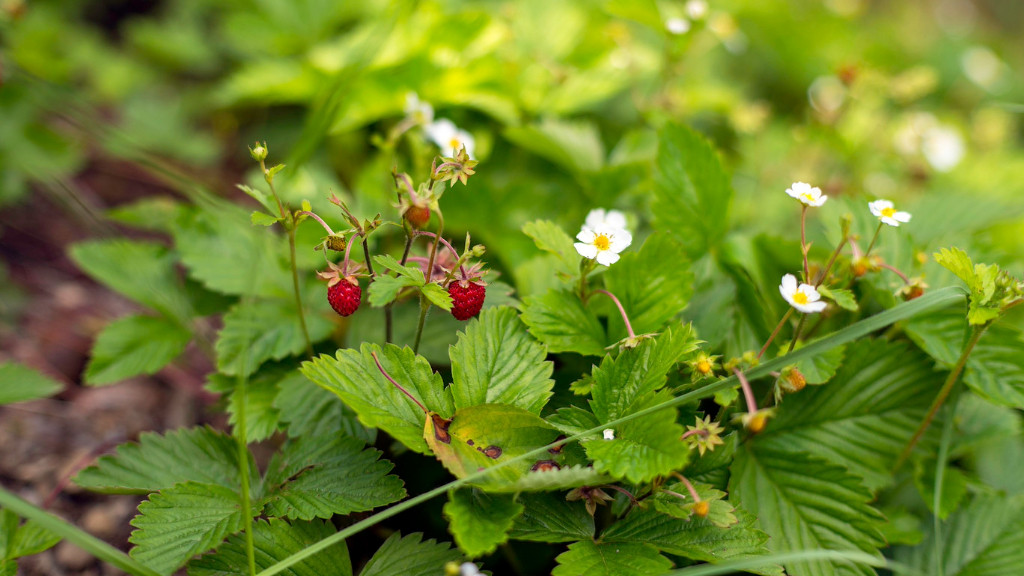Wild Strawberry Information And History


Wild strawberries are not uncommon in backyard gardens. They tend to crop up along fence lines in particular. These tiny, wild original strawberries look like their domesticated counterparts but they lack the size and, sometimes, the sweetness. Still, they may be worth harvesting and it is certainly worth learning some of the fascinating wild strawberry history.
History of Wild Strawberries
The history of wild strawberries begins thousands of years ago. Various types of strawberry are native all over the world. In ancient South America, they were used for trading, while in North America they were medicinal and used to promote fertility. Wild strawberries were used as early as 5,000 years ago as medicine in Asia. The leaves were used to make a detoxifying and anti-aging tea. In ancient Rome, the wild berries treated bad breath and digestive issues. In North America, the native wild strawberry is Fragaria virginiana. It is small but was taken to France in the 1600s to be bred with a South American native, Fragaria chilioensis, to create what would become the modern garden strawberry that we know today. The creation was accidental, but it resulted in a new species that grew vigorously and produced large, tasty berries. Wild strawberry history continues as this resulting cross made its way back to North America in the late 1700s. It had become popular in Europe and found similar enthusiasm in the New World becoming an established crop by the early 1800s.
Wild Strawberry Information for Harvest and Use
Although we call it a berry, a strawberry is not really a berry or a fruit. It is the overgrown flower receptacle. What we call the seeds are achenes, and these are the actual fruits of the plant. The "berries" of the wild plant native to North America are quite small and seedy, but if you collect enough, you can enjoy them as you would domestic strawberries. You can also let them grow in your yard to attract birds. To cultivate wild strawberries, you can uproot wild plants you find in your yard, in the woods or in an open field and plant them in beds. They make a good, low ground cover and an edging plant in beds. Expect the plants to bloom in late spring and be ready to pick wild strawberries by early summer.
Gardening tips, videos, info and more delivered right to your inbox!
Sign up for the Gardening Know How newsletter today and receive a free copy of our e-book "How to Grow Delicious Tomatoes".

Mary Ellen Ellis has been gardening for over 20 years. With degrees in Chemistry and Biology, Mary Ellen's specialties are flowers, native plants, and herbs.
-
 Grow ‘Karl Rosenfield’ Peony Plants For The Ultimate Frilly Border Beauties And Cut Flowers
Grow ‘Karl Rosenfield’ Peony Plants For The Ultimate Frilly Border Beauties And Cut FlowersFor frilly double magenta peony petals infused with a heady fragrance, grow ‘Karl Rosenfield’ peony plants. Here’s how to cultivate the ultimate plushy blooms
By Tonya Barnett
-
 10 Common Composting Problems That Can Spoil Your Garden Gold – Plus Easy Fixes
10 Common Composting Problems That Can Spoil Your Garden Gold – Plus Easy FixesLearn how to troubleshoot common composting issues before they ruin your stash – from bad smells and bugs to materials not breaking down as they should.
By Susan Albert